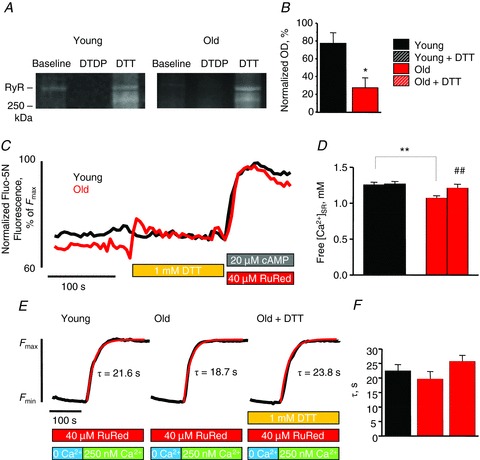Figure 2. Increased thiol oxidation underlies increased RyR-mediated SR Ca2+ leak in cardiomyocytes from old rabbits.

A and B, representative mBB fluorescence intensity signals of RyRs from cardiomyocytes from young and old rabbits and pooled data for free thiol contents normalized by DTT and DTDP: young, 77.89 ± 12.02 vs. old, 27.39 ± 11.09%. *P < 0.05. Cells were from 4–6 heart preparations. OD, optical density. C, representative tracing of time-dependent changes in luminal Fluo-5N signal in permeabilized cardiomyocytes from young and old rabbits after the addition of 1 mm DTT. Data are normalized to the minimum (10 mm caffeine) and maximum (20 μm cAMP + 40 mm Ruthenium Red (RuRed)) fluorescence. D, mean data for [Ca2+]SR before and after DTT application in cardiomyocytes from young and old rabbits. Fluo-5N signal was converted to [Ca2+] using the formula: [Ca2+]SR=Kd(F –Fmin)(Fmax–F)−1, where Kd was 400 μm. [Ca2+]SR values were as follows: young, 1.25 ± 0.04; young + DTT, 1.27 ± 0.04; old, 1.07 ± 0.03; and old + DTT 1.21 ± 0.06 mm. *P < 0.05 for young vs. old (unpaired analysis), #P < 0.05 for old vs. old + DTT (paired analysis), and *P = NS for young + DTT and old + DTT (unpaired analysis). n= 10–13 cells from 2–3 heart preparations. All values are ± SEM. E, representative tracing of time-dependent changes in luminal Fluo-5N signal in permeabilized cardiomyocytes from young and old rabbits and from permeabilized cardiomyocytes from old rabbits in the presence of 1 mm DTT after depletion of SR Ca2+, and chelating cytosolic Ca2+ ([Ca2+]cyt), blocking of RyRs, and reapplication of 250 nm of Ca2+. F, mean time constants (τ) from exponential fit of SR Ca2+ uptake for permeabilized cardiomyocytes: young, 22.51 ± 2.10; old, 19.69 ± 2.54; and old + DTT, 25.71 ± 2.13 s. P = NS for all comparisons. n = 9–21 cells from two heart preparations; all values are mean ± SEM.
